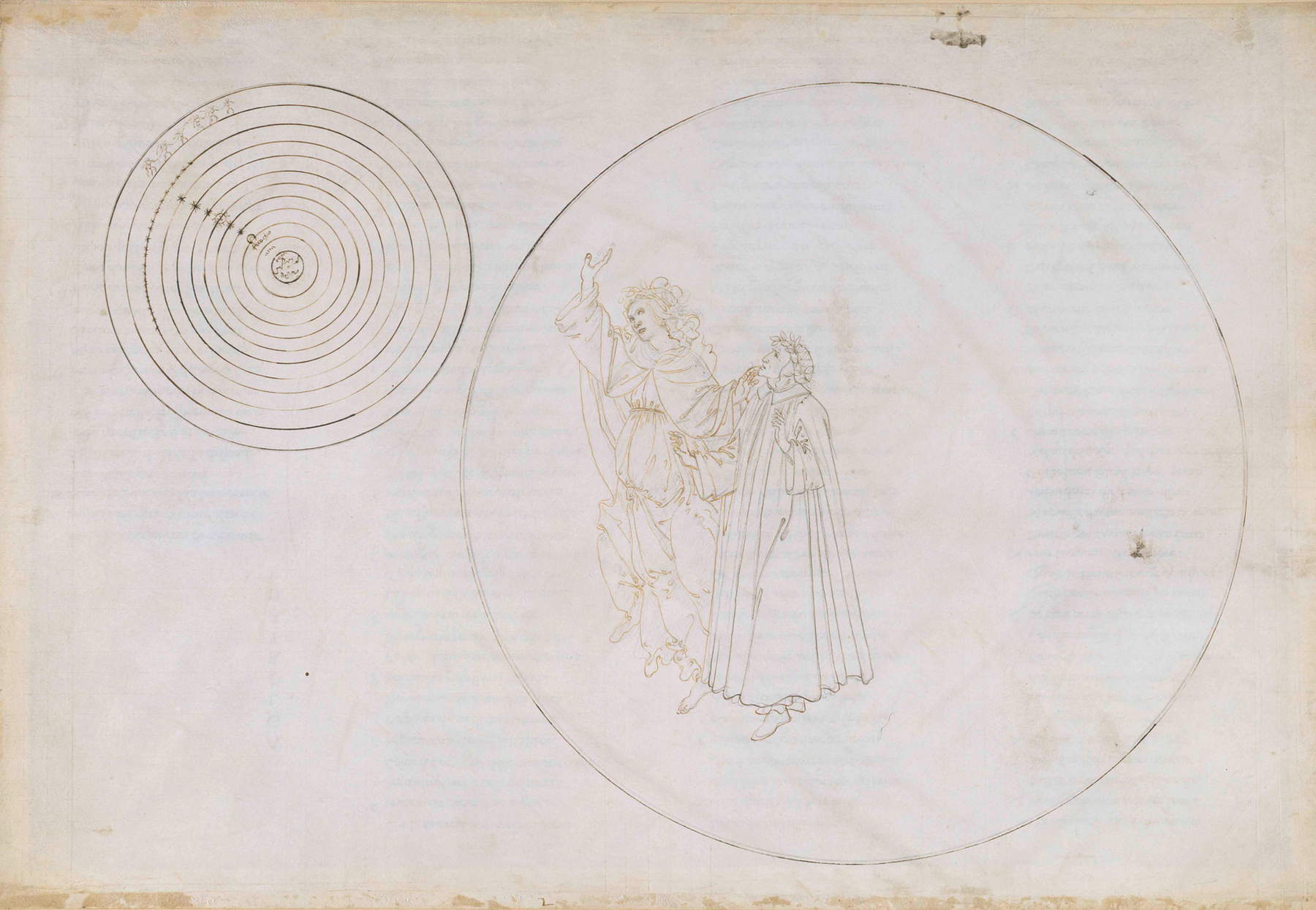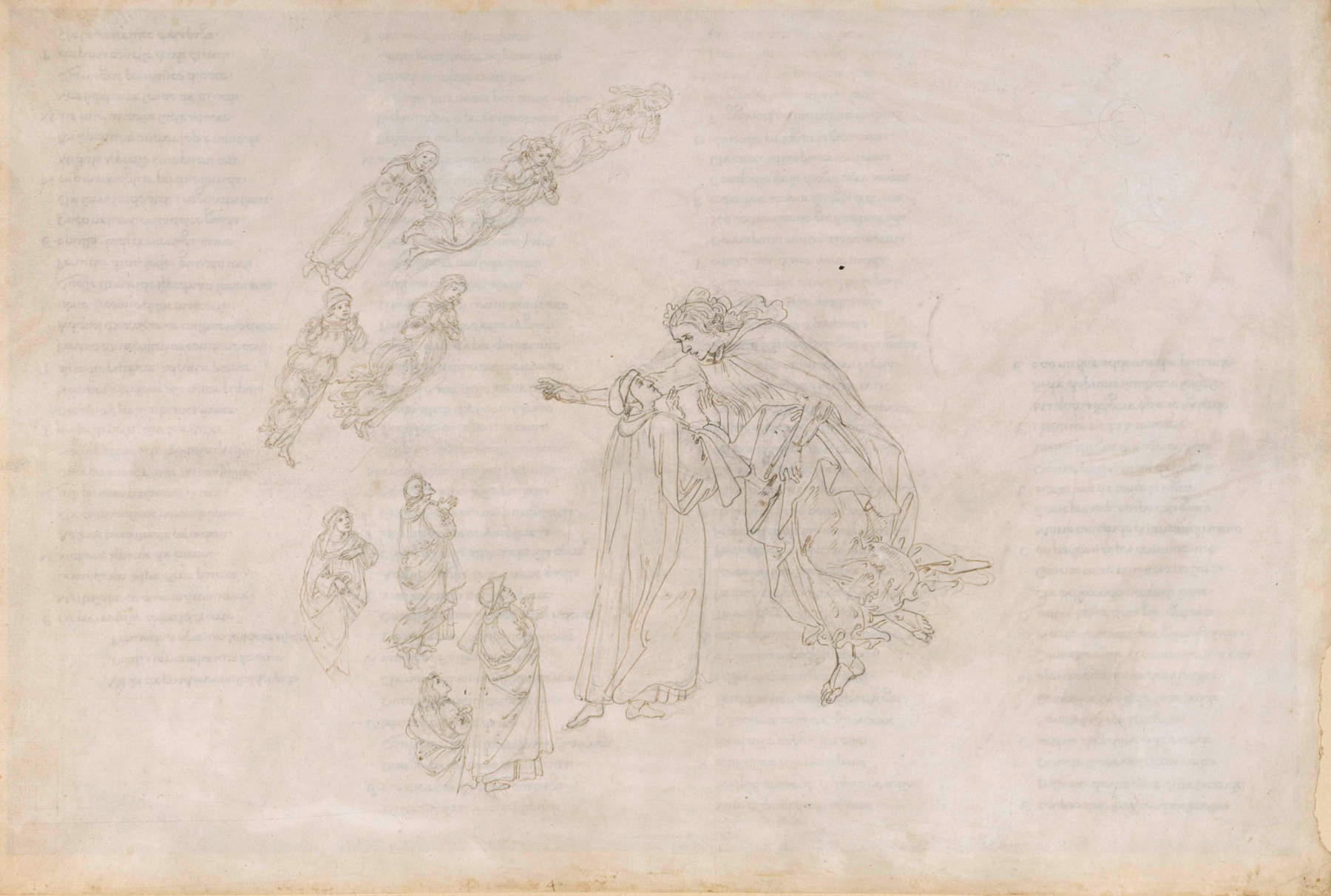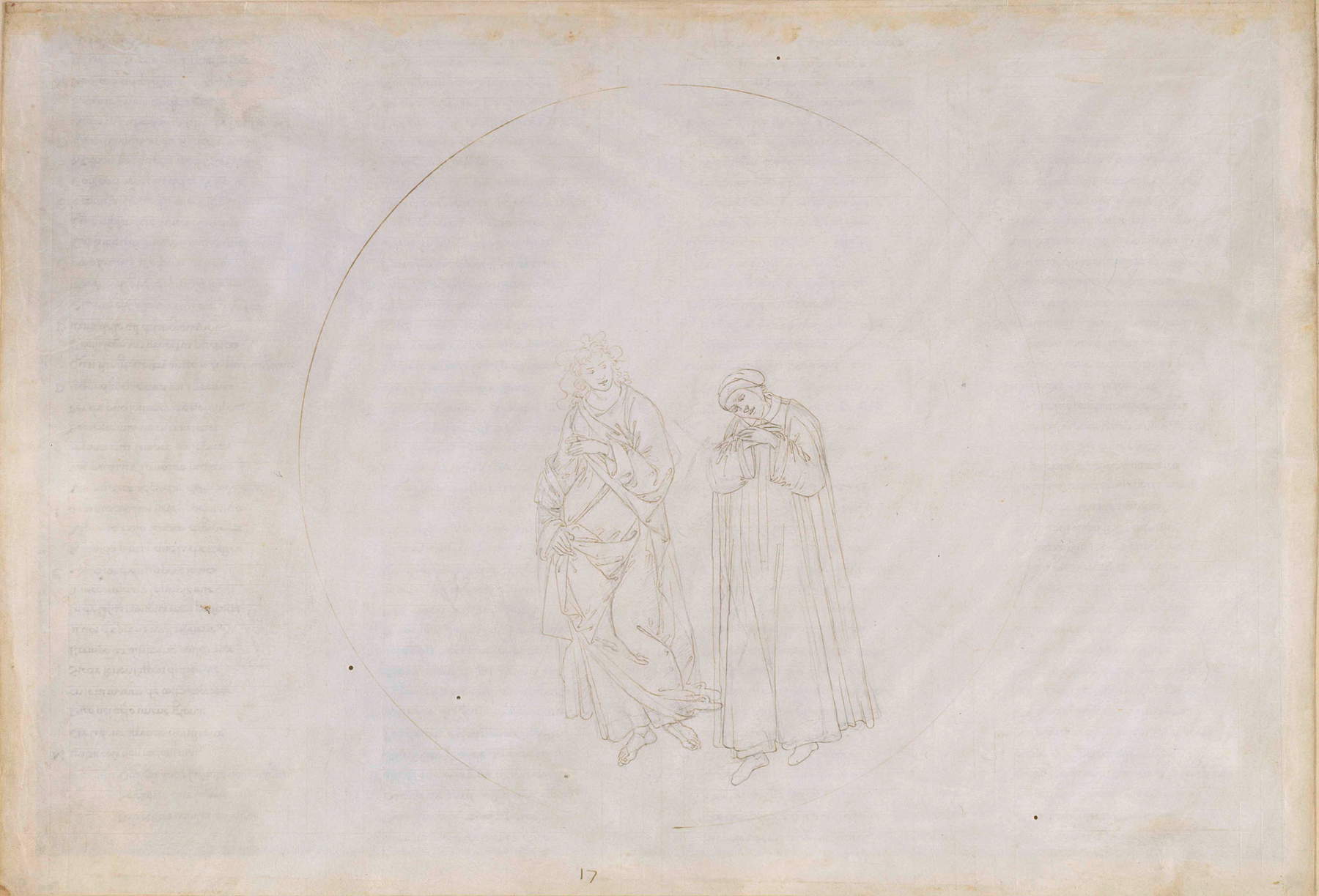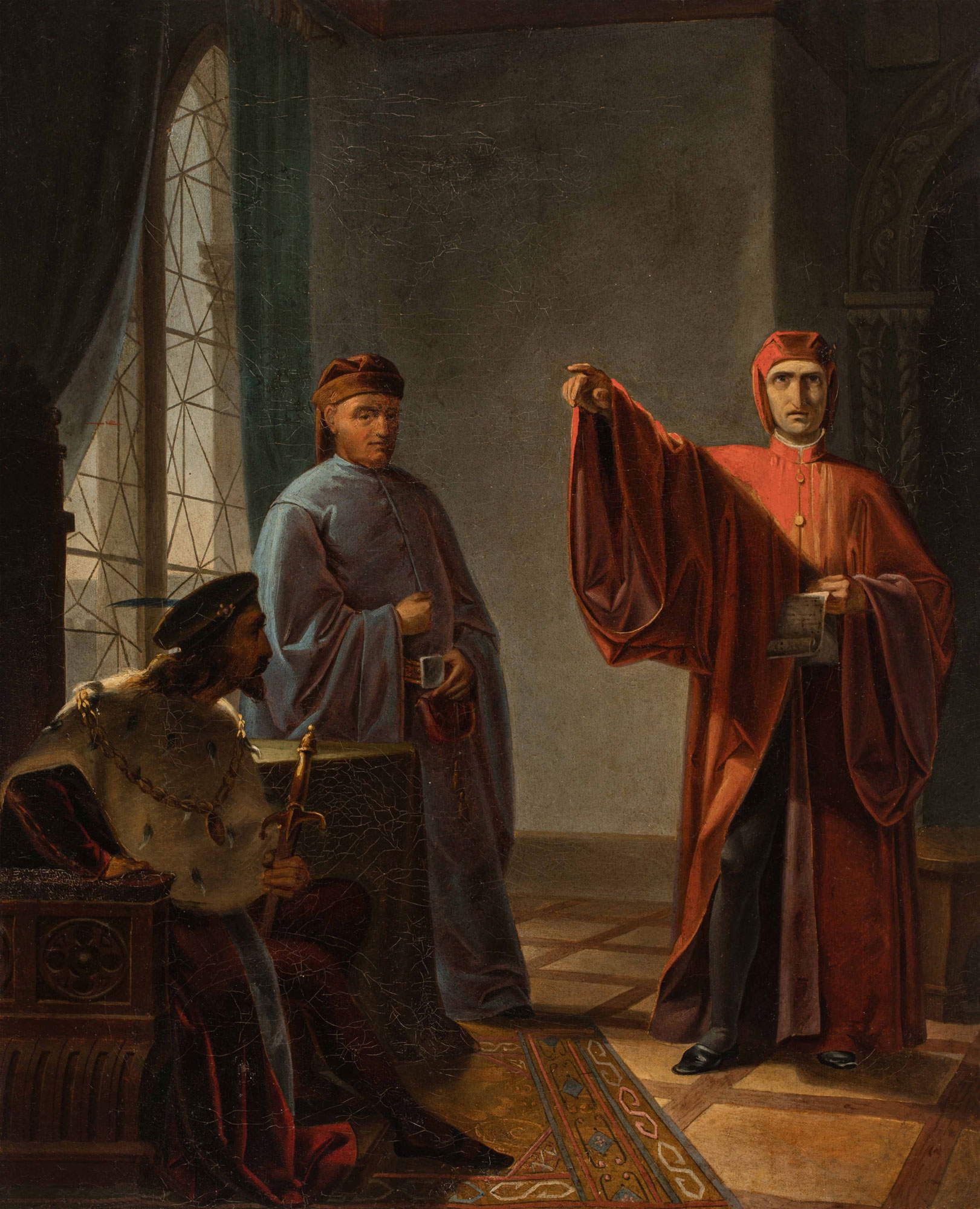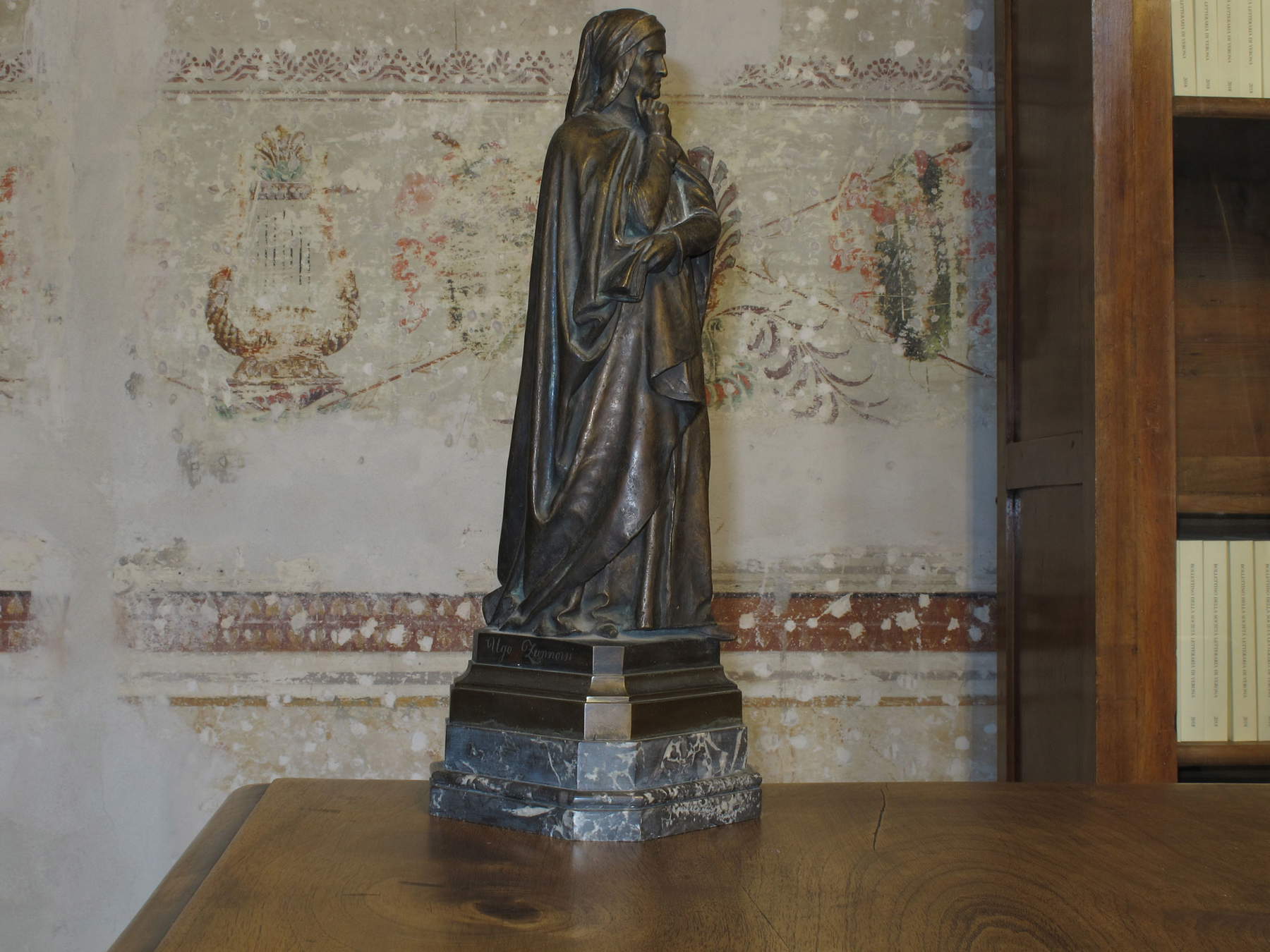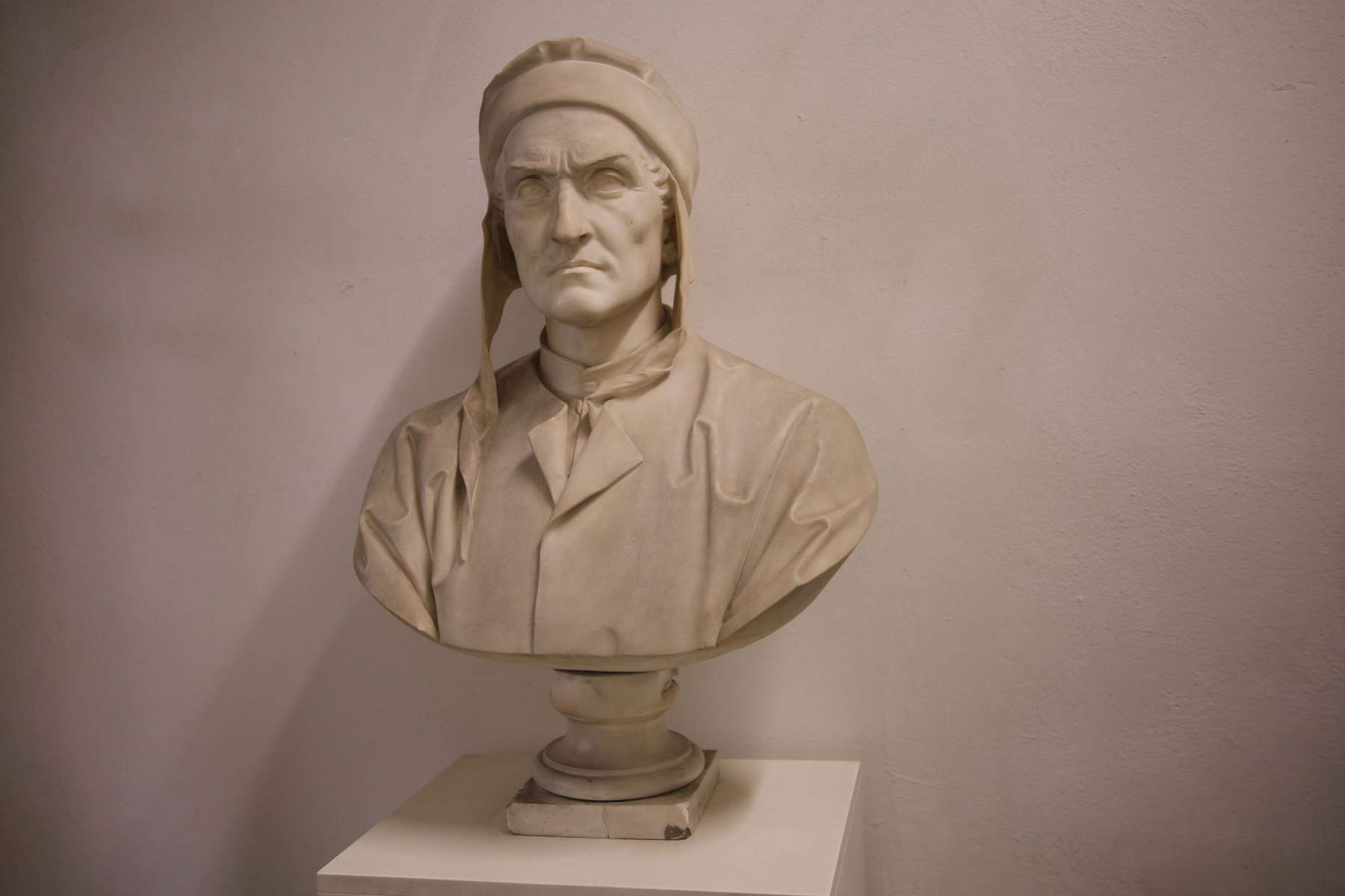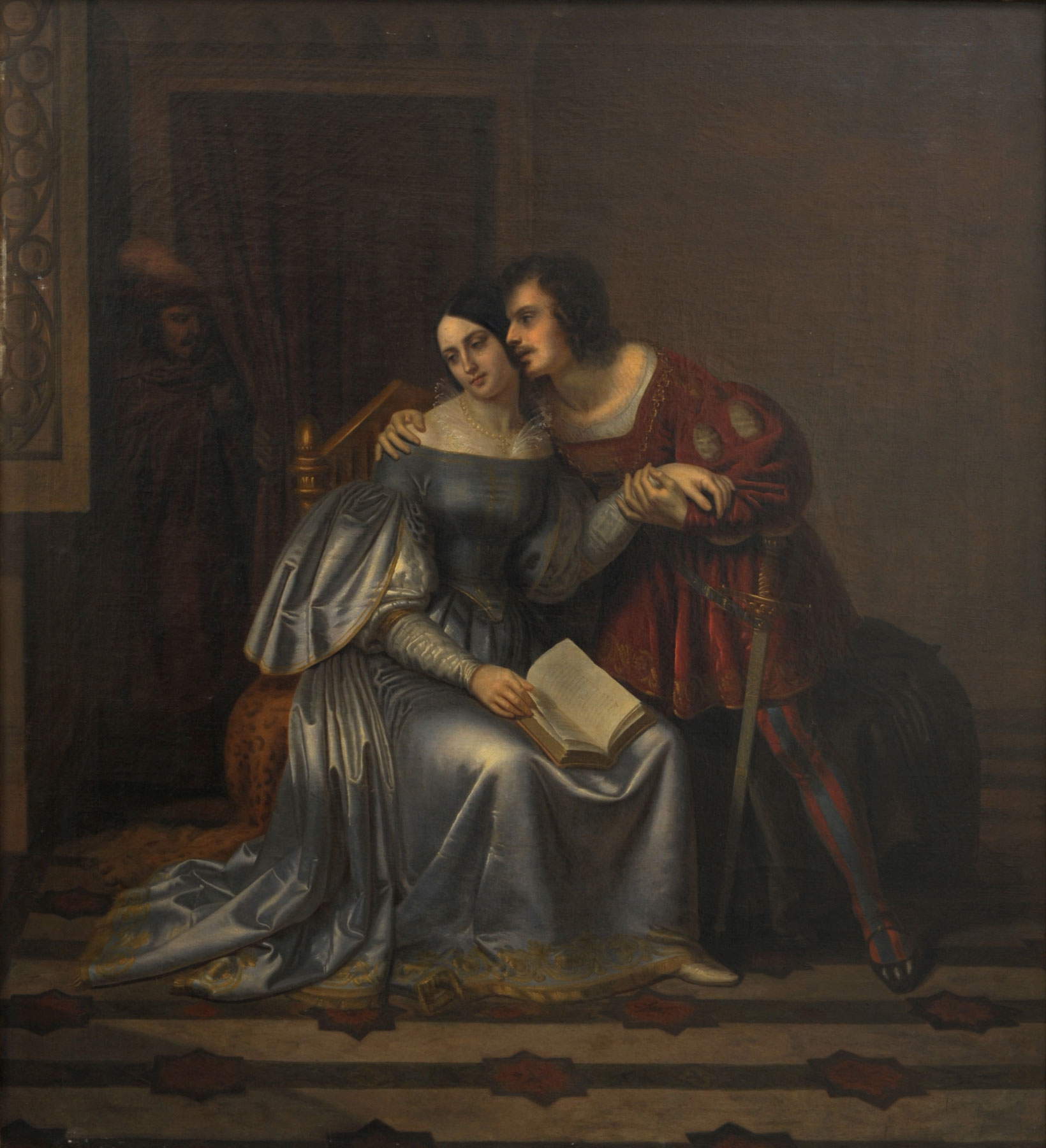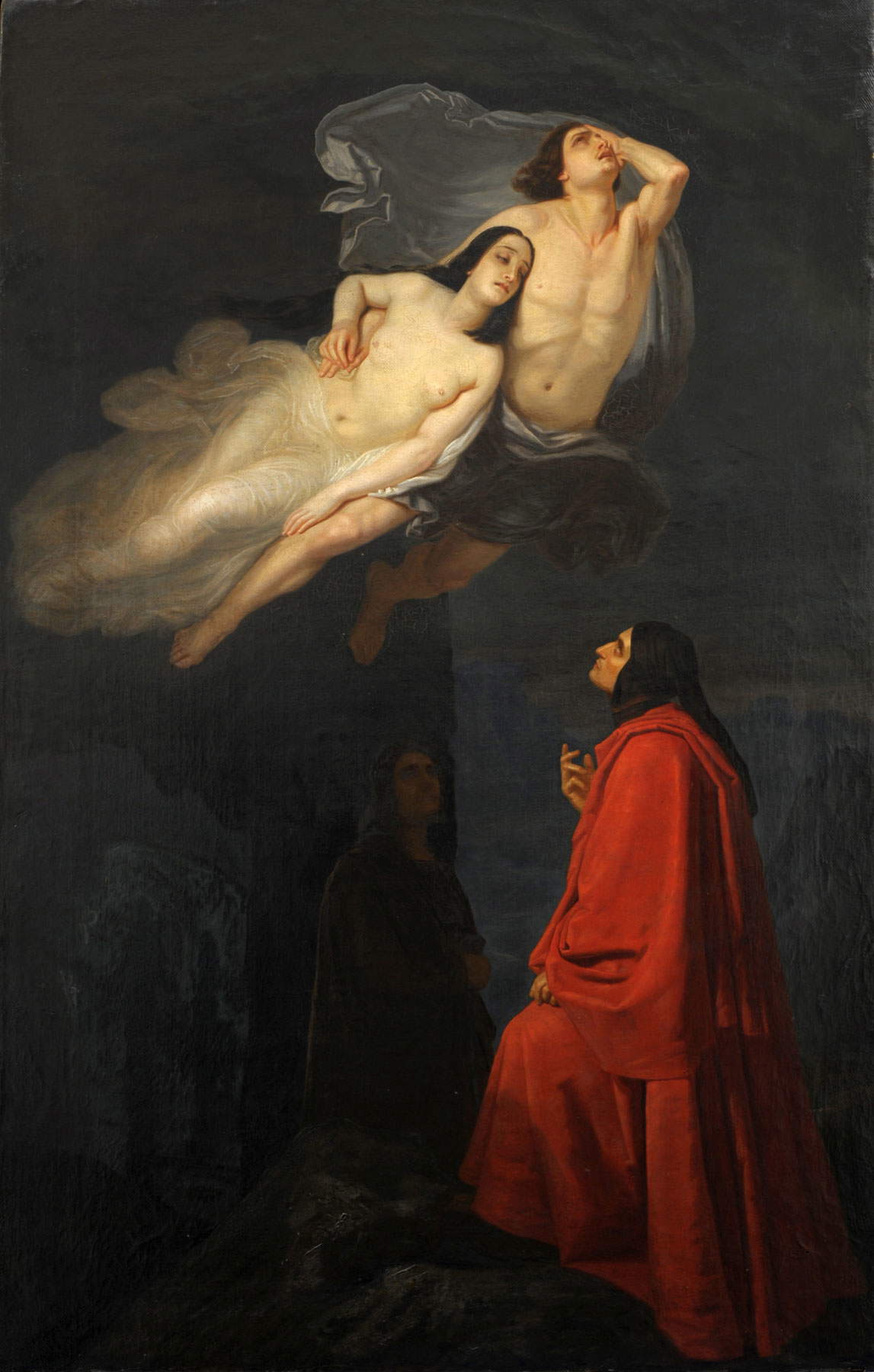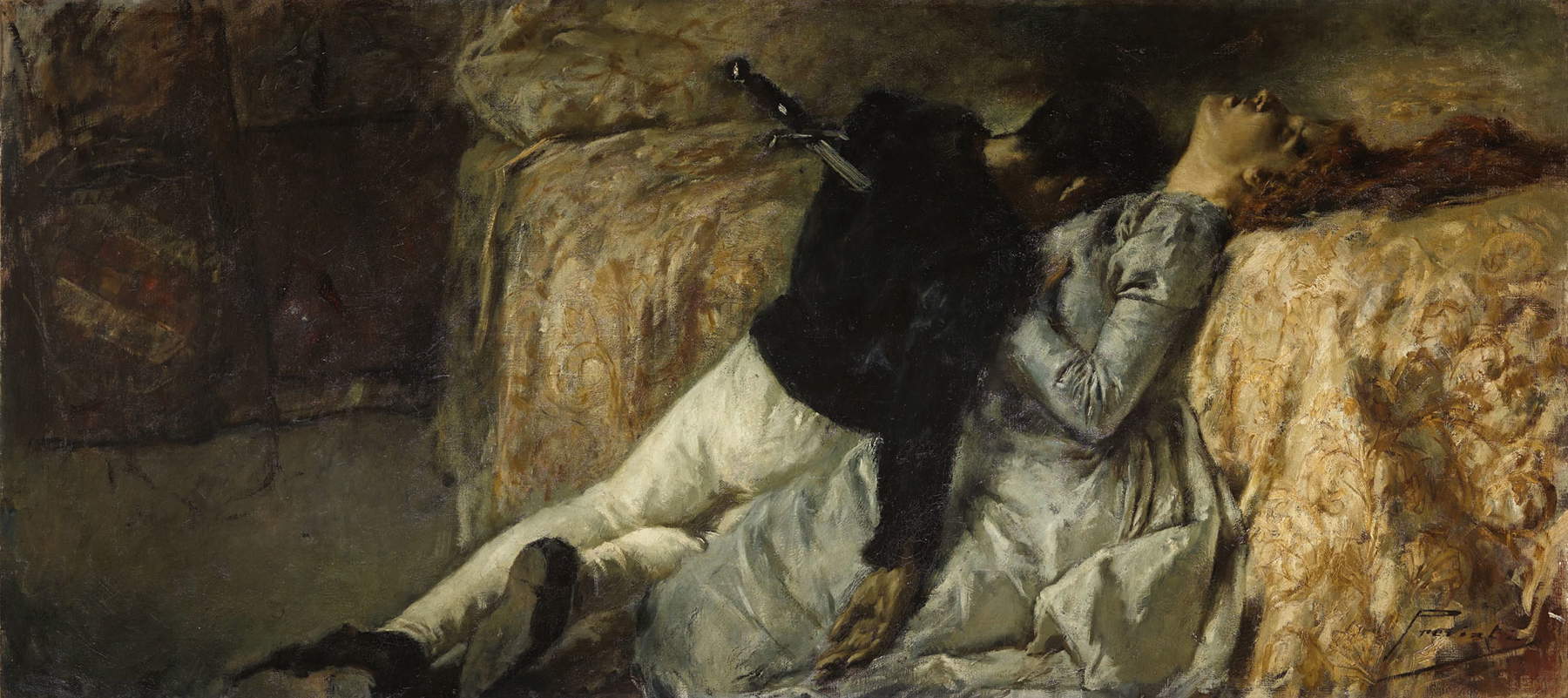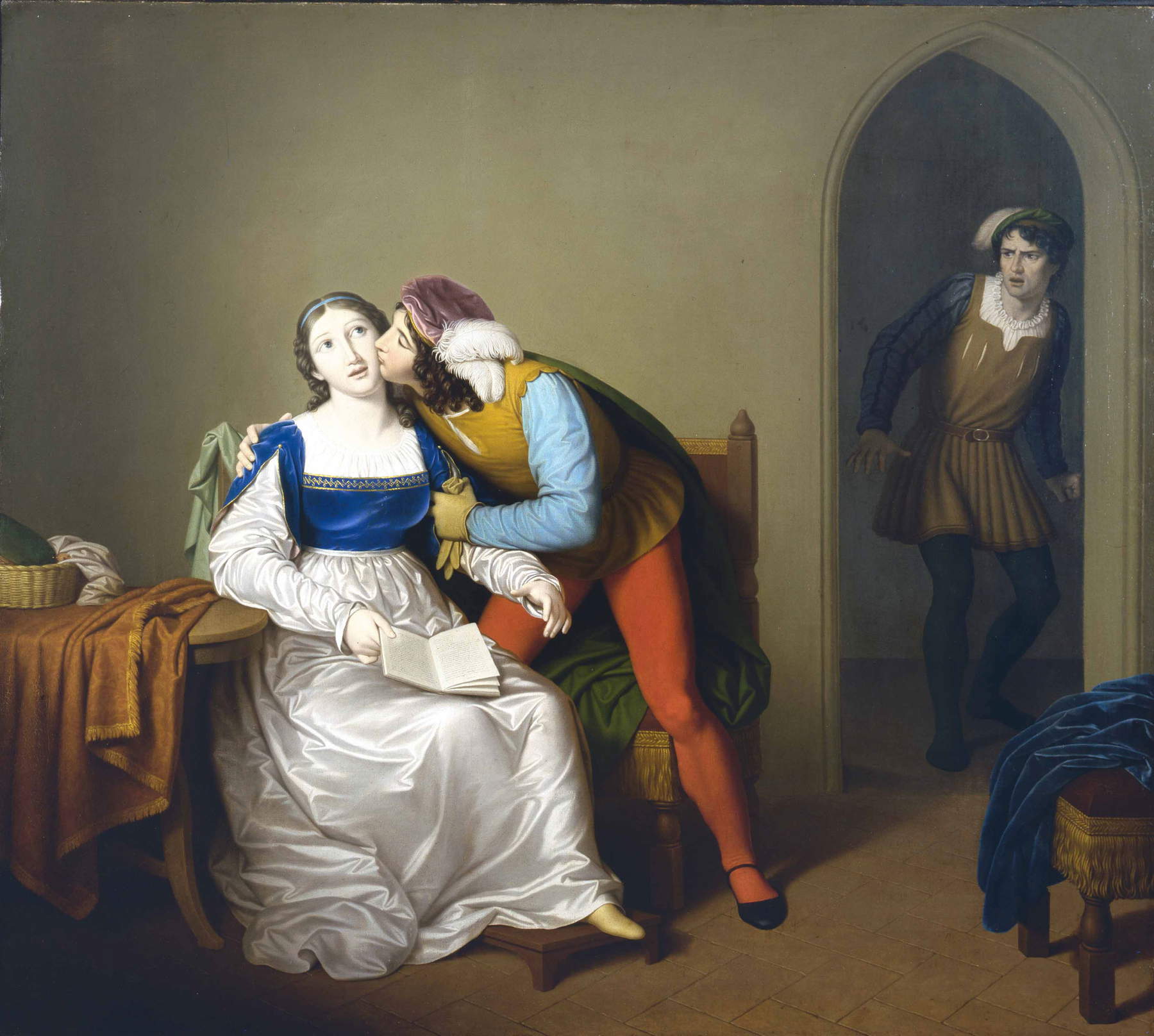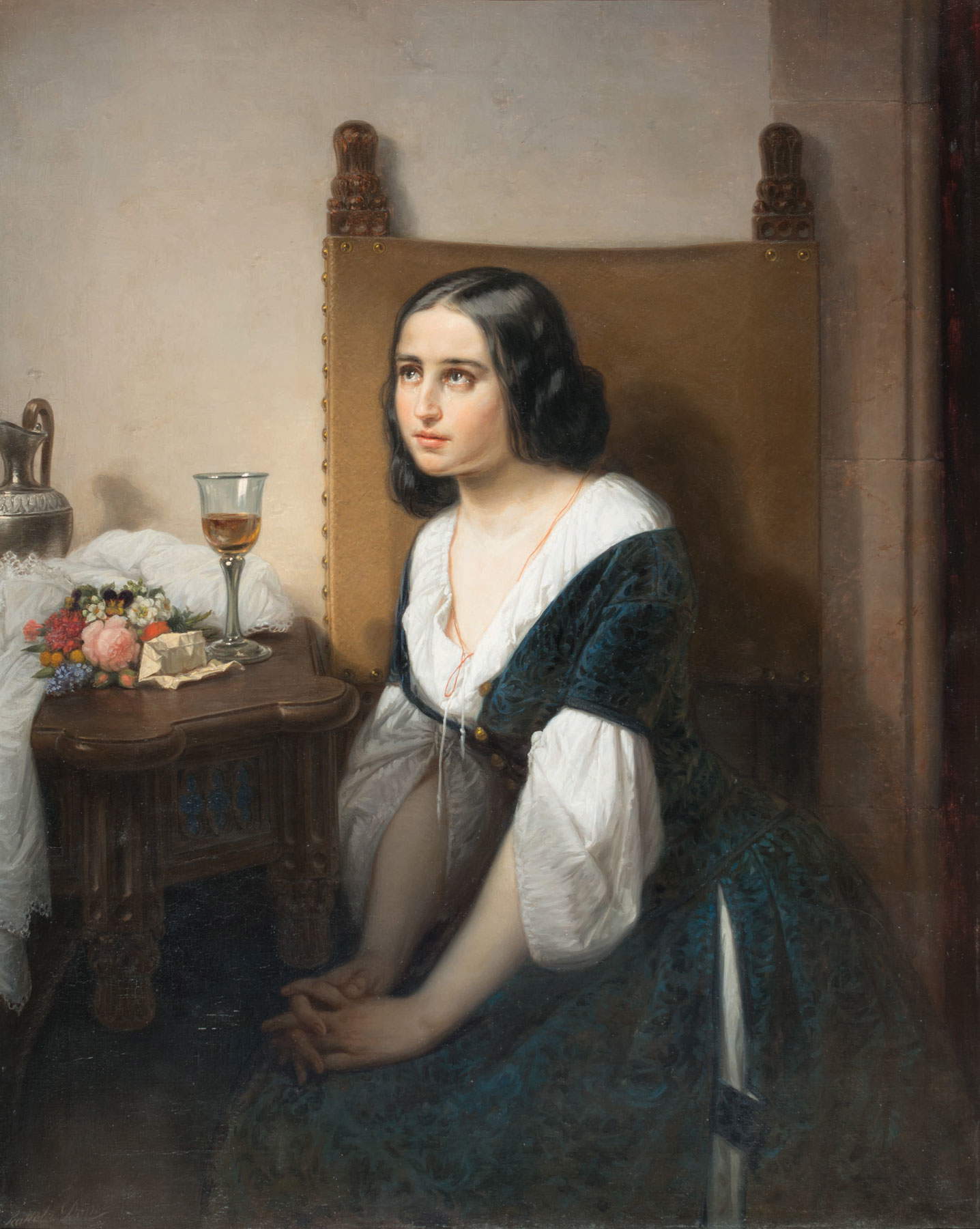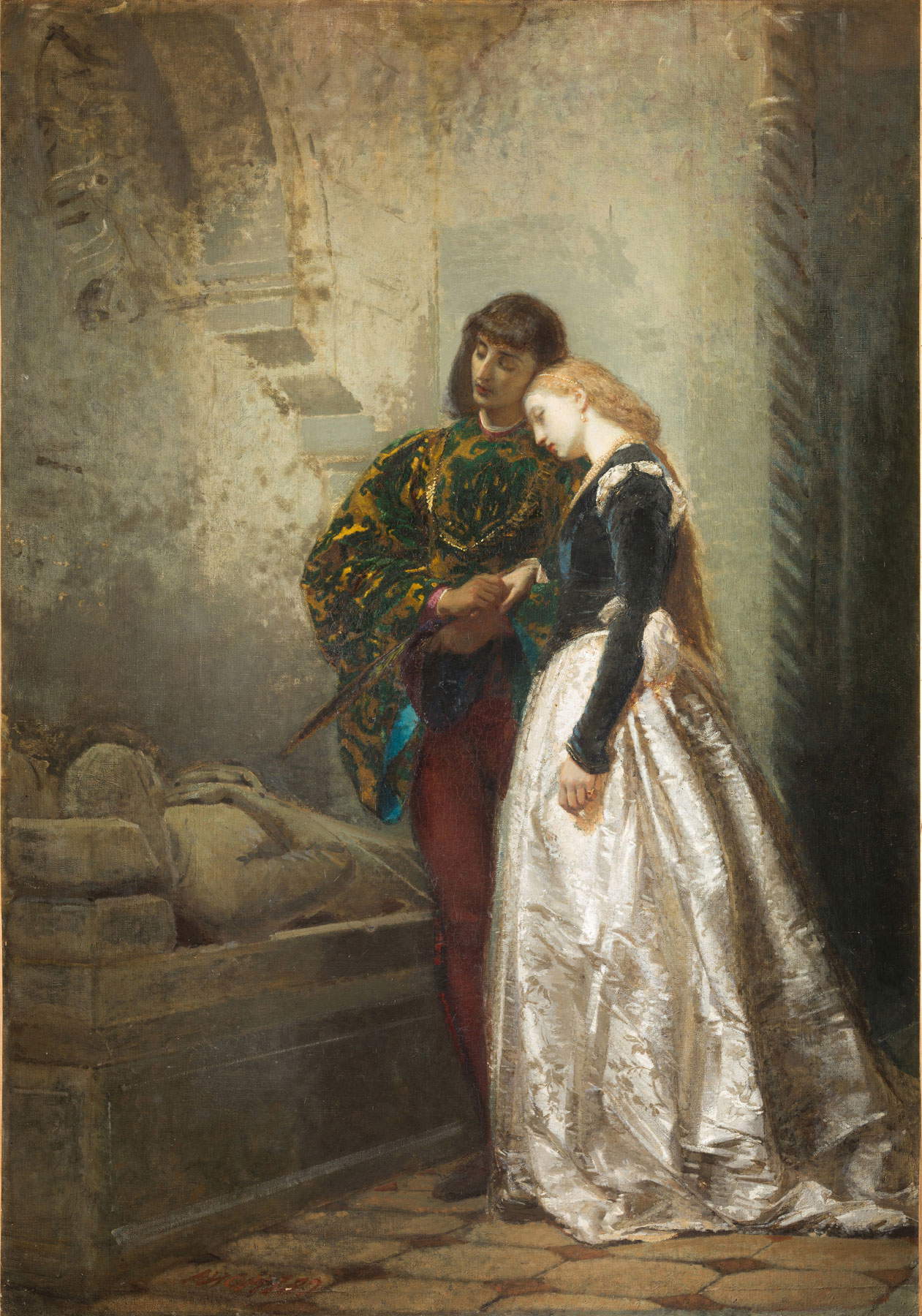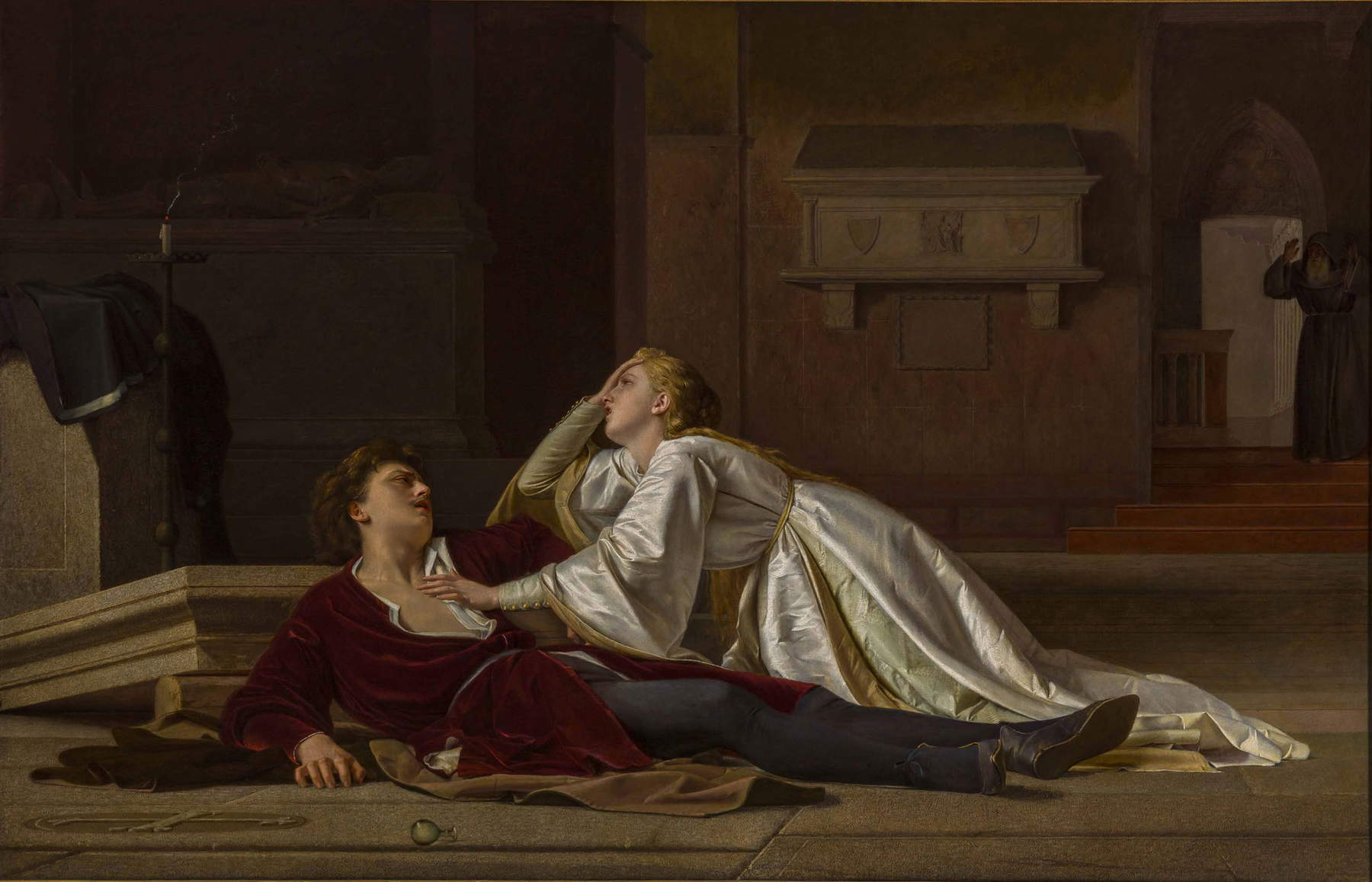by Redazione , published on 09/06/2021
Categories: Exhibitions
/ Disclaimer
Until Oct. 3, a major exhibition at the Achille Forti Gallery of Modern Art in Verona recalls the relationship between Dante and the city, and parallels the story of Paolo and Francesca with that of Romeo and Juliet: it is titled "Between Dante and Shakespeare: the Myth of Verona."
Verona celebrates Dante, on the 700th anniversary of his death, with a large, widespread exhibition involving squares, monuments, churches, palaces and libraries, which visitors can walk through with the help of an author’s map that will guide them through the places directly linked to his presence in the city. The project, titled Verona, Dante and His Legacy 1321 - 2021, is being carried out by the Civic Museums and the City of Verona, with the patronage and contribution of the National Committee for the celebrations of the 700th anniversary of the death of Dante Alighieri (Florence, 1265 - Ravenna, 1321), in collaboration with the University of Verona and the Diocese of Verona, and the contribution of Fondazione Banca Popolare di Verona: The aim of the widespread exhibition is to pay homage to the Supreme Poet and to the very city where Dante was twice welcomed after his exile from Florence. Dante’s relationship with Verona was a close one, especially with the Scaliger court, with which he established a strong relationship over the years, first with Bartolomeo della Scala and then with Cangrande della Scala.
Dante’s first stay in the city of the Scaligeri probably took place from June 1303 to the spring of 1304, as he was sent on a diplomatic mission to the Della Scala court: at the time ruled Bartolomeo della Scala, who died in 1304, and who hosted the poet, as Dante himself states in the 17th Canto of Paradise: the “gran lombardo / che ’n su la scala porta il santo uccello,” referring to the fact that he was the only one of the Scaligeri to display an eagle on his tomb. On this occasion Dante, attached to the government of the Whites, was tasked with convincing Bartholomew to join the anti-Florentine alliance, but the outcome was not positive. However, he stayed in Verona for at least ten months, during which he had the opportunity to see the beauties the city offered and to visit other important Venetian cities, such as Padua (between 1303 and 1304 Padua had excellent relations with Verona, since Bartolomeo della Scala had married Agnese, daughter of Vitaliano del Dente and Beatrice Scrovegni, the latter being the sister of Enrico Scrovegni, who commissioned Giotto to decorate the famous Paduan chapel). Perhaps, in Padua, Dante got to meet and know Giotto: both were Florentines and both were far from their homeland. Dante then returned to Verona between 1316 and 1320, welcomed as a guest and protégé of Cangrande: evidence of the long association between the two is Cangrande’s eulogy in Canto XVII of Paradise andEpistle XIII with which Dante dedicated Paradise to him. Dante presented himself to Cangrande to ask for protection and probably the Epistola dedicatoria was useful for him to ingratiate himself with a powerful protagonist of that time whom he did not know until then.
 |
| Sandro Botticelli, First Sphere of the Planets (Moon Sky). Beatrice Explains Paradise to Dante lorigine of the Lunar Spots and lordship de cosmos, Par. II (1492-1495; pen and brown ink on silver-point preparation on parchment, 322 �? 470 mm; Berlin, Staatliche Museen, Kupferstichkabinett) |
 |
| Sandro Botticelli, First Sphere of the Planets (Moon Sky). Beatrice Explains to Dante the True Seat of the Blessed Ones, Par. IV (1492-1495; pen and brown ink on silverpoint preparation on parchment, 322 �? 470 mm; Berlin, Staatliche Museen, Kupferstichkabinett) |
 |
| Sandro Botticelli, Fifth Sphere of the Planets (sky of Mars): Cacciaguida predicts to Dante lesilio, but also uneterna gloria postuma, Par. XVII (1492-1495; pen and brown ink on dargento point preparation on parchment, 322 �? 470 mm; Berlin, Staatliche Museen, Kupferstichkabinett) |
 |
| Domenico Peterlin, Dante in Exile (1860-1865; oil on canvas, 78.5 �? 105 cm; Vicenza, Museo Civico di Palazzo Chiericati, inv. A.572) |
 |
| Luigi Melche, Dante Reading the Divine Comedy at the Court of the Scaligeri (1864; oil on canvas, 44 �? 36 cm; Padua, Museo dArte Medievale e Moderna, inv. 1209) |
 |
| Leopoldo Toniolo, Dante Visits Giotto in the Scrovegni Chapel (c. 1865; oil on canvas, 75.6 �? 99.3 cm; Padua, Museo dArte Medievale e Moderna, inv. 1767) |
 |
| Ugo Zannoni, Dante Alighieri, sketch for monument in Piazza dei Signori (1865; bronze on bronze and marble pedestal, 41 �? 14.5 �? 15.5 cm; Verona, Società Letteraria). Photo: Gardaphoto, Salò |
 |
| Luigi Ferrari, Bust of Dante (1864; marble, 81 �? 57 �? 37 cm Vicenza, Istituzione pubblica culturale Biblioteca civica Bertoliana) |
Kicking off from these premises, which testify to the Poet’s relationship with Verona, is the exhibition at the heart of the widespread exhibition: Between Dante and Shakespeare: the Myth of Verona, which can be visited from June 11 to October 3, 2021 at the Achille Forti Gallery of Modern Art in Palazzo della Ragione, curated by Francesca Rossi, Tiziana Franco and Fausta Piccoli. The exhibition opens with thealleged meeting between Dante and Giotto in Padua (a painting by Leopoldo Toniolo circa 1865 illustrates Dante’s visit to Giotto in the Scrovegni Chapel), thus tracing the Scaligera artistic culture at the time of Giotto’s pictorial revolution. The exhibition then dwells on the bond that was established between the poet and Cangrande della Scala, and from here move many testimonies that outline the context in which Dante spent the years of his Veronese exile until the creation of his Commedia. The first intent of the exhibition, which develops over a chronological span from the fourteenth to the nineteenth century, is the reconstruction of the relationship between Dante, Verona and the Veneto region in the early fourteenth century. The three drawings by Sandro Botticelli, on loan from the Kupferstichkabinett in Berlin, are from 1492-1495 and are among the most prominent works in this first exhibition nucleus, particularly the one conventionally titled First Sphere of the Planets (Moon Sky). Beatrice explains Paradise to Dante the origin of the moonspots and the ordering of the cosmos. Paradiso II was chosen as the coordinating image of the widespread exhibition: it graphically develops the theme ofDante’s itinerary in Paradiso and translates it into the poet’s journey, guided by Beatrice along the streets of Verona, to discover the places connected to her memory. In addition, decorated manuscript and printed texts of the Comedy guide the public from Dante’s time to the end of the 18th century, testifying to the attention that Verona and Venero gave to the poet and his work.
The second core the exhibition intends to focus on is related to the rediscovery of the myth of Dante in the nineteenth century: in fact, there are numerous works depicting characters and themes connected to the Supreme Poet and the Comedy. A real iconographic fortune of Dante’s characters spread, from Beatrice and Gaddo, from Pia de’ Tolomei to Paolo and Francesca. On display are paintings by Giuseppe Luigi Poli, Gaetano Previati, and Giuseppe Frascheri depicting precisely the tragic love of the two brothers-in-law (we have also devoted in our magazine an in-depth study of 19th-century paintings dealing with the love of Paolo and Francesca). The pair introduces the theme of tragic love between two young people, which is well represented in Verona in the story of Romeo and Juliet-a story born from the pen of Louis da Porto in the 16th century and later made famous worldwide by William Shakespeare. Referring precisely to the myth of Romeo and Juliet are paintings by Tranquillo Cremona, Domenico Scattola, Pietro Roi.
 |
| Giuseppe Frascheri, Paolo and Francesca surprised by Gianciotto (1836; oil on canvas, 140 �? 130 cm; Savona, Pinacoteca Civica - Museo dArte di Palazzo Gavotti). Photo: Fulvio Rosso, Calice Ligure |
 |
| Giuseppe Frascheri, Meeting of Dante with Paolo and Francesca (1850; oil on canvas, 123 �? 81 cm; Savona, Pinacoteca Civica - Museo dArte di Palazzo Gavotti) |
 |
| Gaetano Previati, Paolo and Francesca (c. 1887; oil on canvas, 98 �? 227 cm; Bergamo, Accademia Carrara, inv. 58AC00732) |
 |
| Giuseppe Luigi Poli, The Kiss of Paolo and Francesca (c. 1827; oil on canvas, 106 �? 119 cm; Bergamo, Accademia Carrara, inv. 58AC0074) |
 |
| Domenico Scattola, Juliet in taking a sleeping pill (c. 1846; oil on canvas, 114 �? 91.5 cm; Verona, Fondazione Cariverona Collection, inv. 6742) |
 |
| Tranquillo Cremona, A Visit to Juliet’s Tomb (1862; oil on canvas, 144 �? 100 cm; Milan, Galleria dArte Moderna, inv. GAM 1565), Photo: Umberto Armiraglio, Busto Arsizio |
The aim of the exhibition is to delineate an identity of nineteenth-century Verona, constituted on the one hand by the historical and real presence of Dante at the court of Cangrande (the work depicting Dante reading the Divine Comedy at the court of the Scaligeri is by Luigi Melche), and on the other hand by the imaginary presence of Romeo and Juliet, also created in the setting of a Scaliger Trecento. The two thematic cores define significant aspects of Verona’s urban and cultural physiognomy: the monuments and urban and architectural evidence related to Dante’s exile and the myth of Romeo and Juliet created by Shakespeare.
More information about the exhibition can be accessed at www.danteaverona.it or https://gam.comune.verona.it. Hours: Tuesday through Sunday from 12 to 7 p.m. Closed Mondays. Tickets and reservations only online at www.museiverona.com.
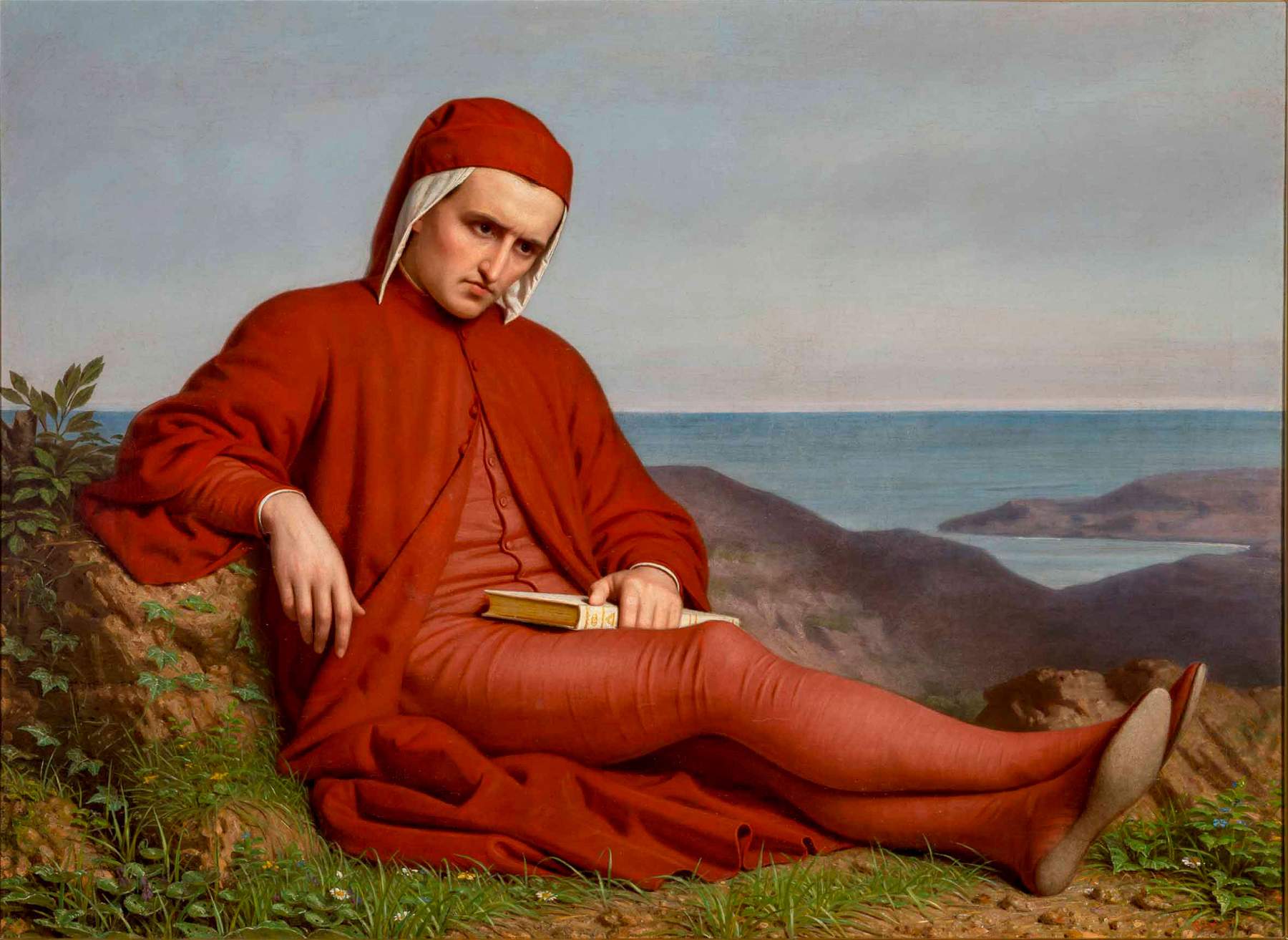 |
| Verona, a major exhibition on Dante's relationship with the city. Going all the way back to Shakespeare |
Warning: the translation into English of the original Italian article was created using automatic tools.
We undertake to review all articles, but we do not guarantee the total absence of inaccuracies in the translation due to the program. You can
find the original by clicking on the ITA button. If you find any mistake,please contact us.
